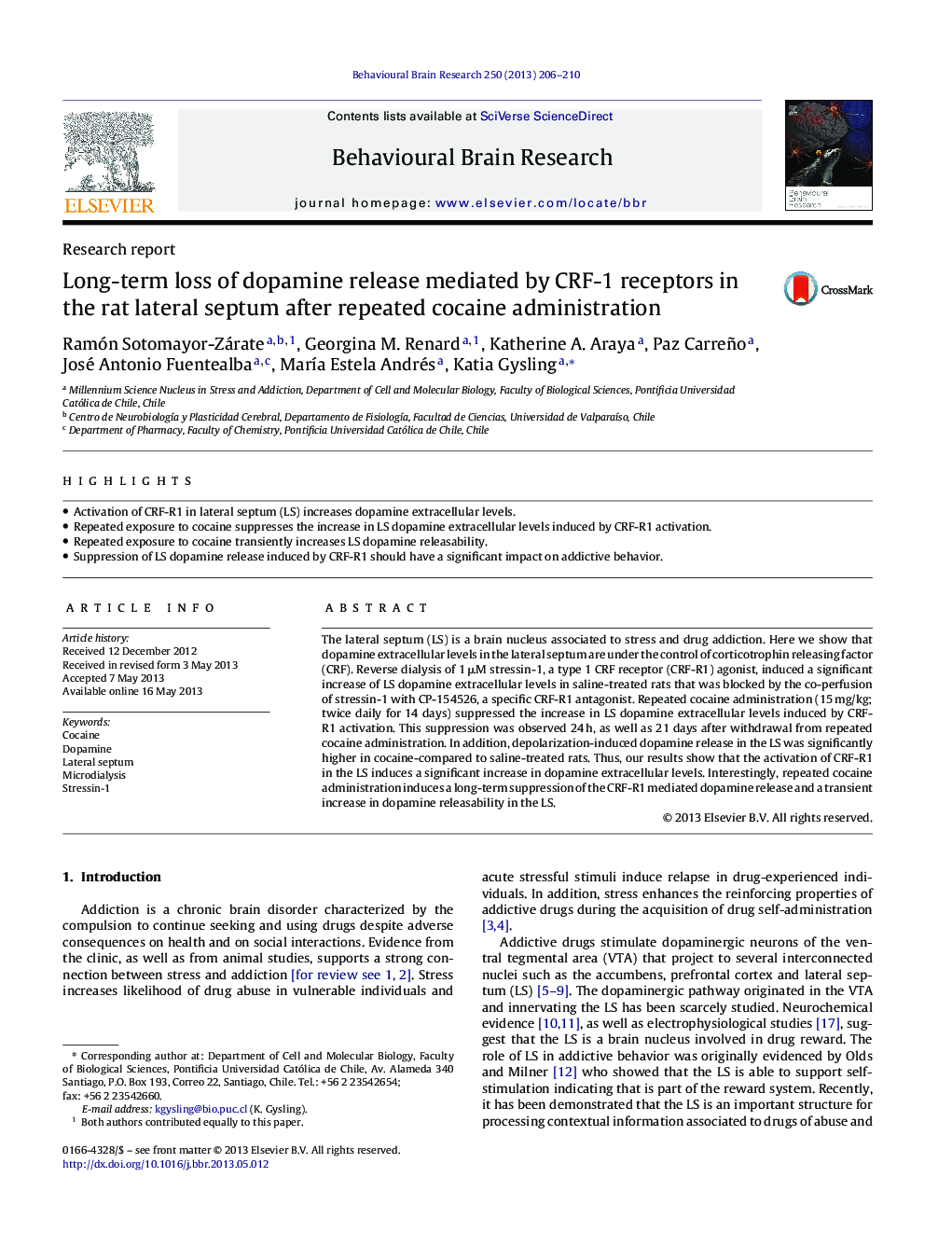| Article ID | Journal | Published Year | Pages | File Type |
|---|---|---|---|---|
| 6258990 | Behavioural Brain Research | 2013 | 5 Pages |
â¢Activation of CRF-R1 in lateral septum (LS) increases dopamine extracellular levels.â¢Repeated exposure to cocaine suppresses the increase in LS dopamine extracellular levels induced by CRF-R1 activation.â¢Repeated exposure to cocaine transiently increases LS dopamine releasability.â¢Suppression of LS dopamine release induced by CRF-R1 should have a significant impact on addictive behavior.
The lateral septum (LS) is a brain nucleus associated to stress and drug addiction. Here we show that dopamine extracellular levels in the lateral septum are under the control of corticotrophin releasing factor (CRF). Reverse dialysis of 1 μM stressin-1, a type 1 CRF receptor (CRF-R1) agonist, induced a significant increase of LS dopamine extracellular levels in saline-treated rats that was blocked by the co-perfusion of stressin-1 with CP-154526, a specific CRF-R1 antagonist. Repeated cocaine administration (15 mg/kg; twice daily for 14 days) suppressed the increase in LS dopamine extracellular levels induced by CRF-R1 activation. This suppression was observed 24 h, as well as 21 days after withdrawal from repeated cocaine administration. In addition, depolarization-induced dopamine release in the LS was significantly higher in cocaine-compared to saline-treated rats. Thus, our results show that the activation of CRF-R1 in the LS induces a significant increase in dopamine extracellular levels. Interestingly, repeated cocaine administration induces a long-term suppression of the CRF-R1 mediated dopamine release and a transient increase in dopamine releasability in the LS.
